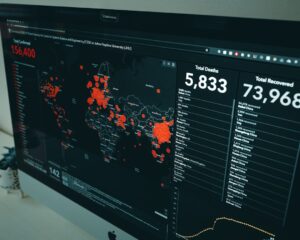Historical Development of Many-Valued Logic
The idea of many-valued logic marks a significant departure from the traditional binary logic that Aristotle established. The pioneering work of Jan Łukasiewicz in the early 20th century laid the foundation for this innovative approach. In 1920, Łukasiewicz proposed a logical system that included more than the traditional two truth values of “true” and “false.” His initial exploration introduced a third truth value, which he termed “possible,” thereby expanding the binary framework into a ternary one. This radical departure set the stage for further developments in the realm of many-valued logic.
Following Łukasiewicz’s groundbreaking work, other logicians began to explore and expand upon the idea of multiple truth values. Emil Post, in his 1921 paper, contributed significantly by generalizing Łukasiewicz’s ternary logic to n-valued logics, where ‘n’ could be any integer greater than two. Post’s work provided a more extensive mathematical foundation, enabling the development of more complex logical systems that could accommodate a wider range of truth values.
Paul Bernays also played a crucial role in the evolution of many-valued logic. His contributions in the mid-20th century included the formalization of logical systems that incorporated an infinite spectrum of truth values. Bernays’s work helped bridge the gap between theoretical formulations and practical applications, particularly in the fields of computer science and artificial intelligence.
The study of many-valued logic continued to advance throughout the 20th century as a result of developments in mathematics and technology. Modern developments have seen many-valued logic being applied in diverse areas such as fuzzy logic, quantum computing, and decision theory. Researchers continue to explore the potential of many-valued logic in addressing complex problems that binary logic cannot adequately resolve.
Ongoing research in many-valued logic seeks to refine and expand its theoretical underpinnings, as well as explore novel applications. The field remains dynamic, with continuous contributions from logicians, mathematicians, and computer scientists working to harness the full potential of this multifaceted approach to logic.
Relation Between Classical Logic and Many-Valued Logic
Classical logic, often referred to as binary or bivalent logic, operates on the principle that every proposition is either true or false. This dichotomy forms the foundation of many logical systems and is central to mathematical reasoning, computer science, and philosophical discourse. However, many-valued logic expands upon this binary framework by introducing additional truth values beyond the traditional true/false dichotomy. This extension allows for a more nuanced representation of propositions, accommodating situations where truth is not strictly binary.
One of the primary differences between classical logic and many-valued logic is the introduction of intermediate truth values. For instance, three-valued logic, a common form of many-valued logic, includes an additional truth value often interpreted as “unknown” or “indeterminate.” This extra value can represent scenarios where information is incomplete or where a proposition’s truth is not fully determined. As a result, many-valued logic provides a more flexible and realistic approach to reasoning in contexts where binary truth values are insufficient.
Despite these differences, many-valued logic retains several foundational elements of classical logic. For example, the principles of non-contradiction and excluded middle, which assert that a proposition cannot be both true and false and must be either true or false, respectively, are often adapted rather than discarded. In many-valued systems, these principles are modified to account for the additional truth values, ensuring that the logical structure remains consistent while offering greater expressiveness.
One illustrative example of the relationship between classical and many-valued logic is found in Łukasiewicz’s three-valued logic. This system introduces a third value, often denoted as “0.5,” representing an intermediate state between true (1) and false (0). Logical operations such as conjunction (AND) and disjunction (OR) are then redefined to accommodate this third value, demonstrating how classical logic principles can be extended to incorporate many-valued logic’s additional complexity. This extension highlights the adaptability and broader applicability of logical systems when moving beyond binary constraints.
In summary, many-valued logic serves as an extension of classical logic, offering additional flexibility and nuance by introducing extra truth values. While it diverges from the binary true/false framework, it retains key principles of classical logic, adapting them to accommodate the increased complexity. This relationship underscores the evolving nature of logical systems and their capacity to address a wider range of real-world scenarios.
Distinction Between Extended Logic and Deviant Logic
Extended logic systems and deviant logics represent two distinct approaches within the broader landscape of non-classical logics. While both aim to address limitations inherent in classical logic, their methodologies and objectives diverge significantly.
Extended logics, such as many-valued logic, seek to expand the traditional binary framework of true and false by introducing additional truth values. This broadening of scope allows for a more nuanced representation of truth, accommodating scenarios where propositions may be partially true or false. For instance, in a three-valued logic system, propositions can take on values such as true, false, or indeterminate. This extension is particularly useful in fields such as computer science and artificial intelligence, where the complexity of real-world information often defies simplistic binary categorization.
Conversely, deviant logics challenge the very foundational principles of classical logic. Paraconsistent logic, for example, allows for the coexistence of contradictory statements without collapsing into triviality. In classical logic, a single contradiction can render an entire system inconsistent, but paraconsistent logic mitigates this issue, proving useful in contexts where inconsistencies are inevitable and must be managed rather than eliminated. Similarly, relevance logic rejects the principle of material implication, which in classical logic permits implications where the antecedent is irrelevant to the consequent. By ensuring that the premises are meaningfully connected to the conclusions, relevance logic strives for a more intuitive and applicable logical system.
In summary, while extended logics like many-valued logic aim to enhance classical logic by introducing more truth values, deviant logics such as paraconsistent and relevance logics question and revise the core principles of classical logic. These distinctions highlight the diversity of approaches within non-classical logic, each with its own theoretical underpinnings and practical applications.
Structural Features of Many-Valued Logic
Many-valued logic represents a significant departure from classical binary logic by allowing for more than two truth values. To understand these systems, it is essential to grasp their formal syntax and semantics. At the core, many-valued logic extends the binary set of {true, false} to a broader range of truth values. For example, in a three-valued logic system, truth values might include true, false, and unknown. This expanded set necessitates a more complex syntax and semantics to define the behavior of logical statements.
One fundamental aspect of many-valued logic is the construction of truth tables. Unlike binary logic, where truth tables are straightforward with two possible values for each variable, many-valued logic truth tables must account for multiple truth states. Each row in the truth table represents a unique combination of these states, leading to a more intricate structure. This complexity allows for a more nuanced evaluation of logical expressions.
Logical connectives such as AND, OR, and NOT are also redefined in many-valued logic to accommodate the additional truth values. For instance, the AND connective in a three-valued system might be defined such that the result is true only if both operands are true, false if one or both are false, and unknown if at least one operand is unknown. These redefinitions ensure that logical operations maintain consistency within the expanded truth value set.
Algebraic structures like lattices play a critical role in understanding many-valued logic systems. Lattices provide a framework for organizing and comparing the various truth values. In many-valued logic, a lattice structure helps in visualizing how different truth values relate to one another and how logical operations interact within this framework. The lattice structure ensures that the logic system is closed and well-defined, facilitating rigorous mathematical analysis.
Many-valued logic’s syntax and semantics, complex truth tables, redefined logical connectives, and underlying algebraic structures all work together to make a strong framework for reasoning beyond binary constraints. These features collectively enhance the applicability and expressiveness of logical systems in various domains.
Applications of Many-Valued Logic in Computer Science
Many-valued logic is an extension of classical binary logic. It has important uses in computer science, especially when designing systems that can work even when something goes wrong. It is also useful in database theory and the way AI makes decisions. Its ability to handle more than two truth values allows for greater flexibility and precision in various computational tasks.
One of the primary applications of many-valued logic lies in the development of fault-tolerant systems. Traditional binary logic systems are often vulnerable to single points of failure, which can lead to system crashes or malfunctions. Many-valued logic, however, can mitigate these risks by incorporating intermediate truth values, which serve as redundant checks. This redundancy enhances system resilience, ensuring that operations can continue smoothly even in the presence of faults or inconsistencies.
In the realm of database theory, many-valued logic plays a crucial role in managing incomplete or uncertain information. Classical binary logic struggles with records that have undefined or null values, often resulting in erroneous query results or data integrity issues. By employing many-valued logic, databases can better handle such uncertainties, leading to more accurate and reliable data processing. For example, SQL databases can use three-valued logic (true, false, unknown) to manage null values more effectively, improving the robustness of data operations.
Artificial intelligence and decision-making processes also benefit significantly from many-valued logic. In AI, decision-making often involves reasoning under uncertainty, where binary logic falls short. Many-valued logic allows AI systems to represent and process a spectrum of possibilities, leading to more nuanced and reliable decisions. For instance, fuzzy logic, a subset of many-valued logic, is widely used in AI for tasks such as control systems, natural language processing, and pattern recognition. Fuzzy logic systems can mimic human reasoning more closely by handling partial truths, thus enhancing the overall performance and reliability of AI applications.
Case studies highlight the tangible benefits of integrating many-valued logic into computer science. For example, in the field of medical diagnostics, many-valued logic enables the development of expert systems that can manage uncertain symptoms and provide more accurate diagnoses. Similarly, in the financial sector, many-valued logic-based models improve risk assessment and decision-making processes by accommodating various degrees of uncertainty and risk factors.
Overall, adding many-valued logic to computer science makes it easier to build systems that are more resilient, flexible, and smart. This is because it gets around the problems with classical binary logic and makes computing processes more efficient and reliable.
Philosophical Implications of Many-Valued Logic
Many-valued logic, with its ability to accommodate more than the traditional binary true/false dichotomy, offers profound philosophical implications. One of the most significant areas of impact is on the theory of truth. Traditional binary logic operates under the principle of bivalence, which asserts that every proposition is either true or false. However, many-valued logic challenges this principle by introducing additional truth values, which can represent states such as ‘unknown,’ ‘indeterminate,’ or ‘both true and false.’ This expanded framework allows for a more nuanced understanding of truth, especially in complex systems where binary distinctions are insufficient.
In epistemology, the study of knowledge, many-valued logic provides a more flexible tool for modeling human reasoning and belief systems. It acknowledges that our knowledge is often incomplete or uncertain, and thus, a truth value between true and false can better represent epistemic states. For instance, the truth value ‘unknown’ can capture the state of agnosticism, where a subject neither affirms nor denies a proposition due to lack of information. This approach aligns more closely with the realities of human cognition and decision-making processes.
From a metaphysical perspective, many-valued logic has the potential to redefine our understanding of reality itself. By allowing for intermediate truth values, it accommodates phenomena that do not fit neatly into binary categories. This can be particularly useful in quantum mechanics, where particles can be in superposition states that defy classical binary logic. Furthermore, many-valued logic can help address long-standing logical paradoxes, such as the liar paradox, by providing a framework where a statement can be both true and false to varying degrees.
Critics argue that many-valued logic complicates the simplicity and elegance of classical logic. They contend that introducing additional truth values can lead to ambiguity and interpretative challenges. However, proponents argue that the complexity is a necessary reflection of the real world’s intricacies. Many-valued logic’s ability to model uncertainty and indeterminacy offers a more accurate and comprehensive representation of various philosophical and scientific domains.
Comparison with Other Non-Classical Logics
Many-valued logic, as its name suggests, extends beyond the binary true/false paradigm of classical logic by incorporating more than two truth values. This flexibility distinguishes it from other non-classical logics such as fuzzy logic, intuitionistic logic, and modal logic. Each of these alternative systems serves unique purposes and addresses different philosophical and practical concerns.
Fuzzy logic, for instance, is closely related to many-valued logic but focuses on handling the concept of partial truth. Instead of limiting truth values to discrete points, fuzzy logic allows for a continuum of truth values between 0 and 1. This approach is particularly effective in dealing with vagueness and imprecision, which makes it highly applicable in fields like control systems, artificial intelligence, and decision-making processes. While many-valued logic quantizes truth values, fuzzy logic provides a more granular and flexible approach to uncertainty.
Intuitionistic logic, on the other hand, diverges fundamentally by rejecting the law of excluded middle, which states that any proposition is either true or false. Intuitionistic logic requires constructive proof of existence, meaning that to assert that a proposition is true, one must provide a proof. This logic is instrumental in areas such as computer science and constructive mathematics, where the existence of an entity must be demonstrated rather than assumed. Unlike many-valued logic, which expands the truth value set, intuitionistic logic modifies the rules of inference and the interpretation of logical connectives.
Modal logic introduces the notions of necessity and possibility, using operators to express statements about what is necessarily true or possibly true. This logic is invaluable in fields like philosophy, linguistics, and computer science for reasoning about knowledge, belief, and temporal events. Modal logic can be seen as orthogonal to many-valued logic, as it does not typically address the multiplicity of truth values but rather extends classical logic with new modal operators.
In summary, while many-valued logic, fuzzy logic, intuitionistic logic, and modal logic each offer unique tools for formal reasoning, they cater to different types of problems and philosophical underpinnings. Many-valued logic stands out for its capacity to handle more than two discrete truth values, providing a versatile framework for scenarios where binary logic falls short.
Future Directions and Research in Many-Valued Logic
As we look to the future, interdisciplinary research and emerging technologies will likely lead to significant advancements in the field of many-valued logic. One of the most promising areas for future exploration is quantum computing. Quantum systems inherently operate on principles that align well with many-valued logic, offering the potential to revolutionize computational paradigms. Research is increasingly focused on developing quantum algorithms that leverage many-valued logic to enhance computational speed and efficiency, pushing the boundaries of what is computationally feasible.
In the realm of artificial intelligence, many-valued logic is gaining traction as a foundation for creating more sophisticated AI algorithms. Traditional binary logic often falls short in handling the complexity and ambiguity inherent in real-world data. By integrating many-valued logic, AI systems can achieve a higher degree of nuance and accuracy in decision-making processes. This approach is particularly relevant in areas such as natural language processing, machine learning, and autonomous systems, where the ability to process and respond to complex, multi-faceted information is crucial.
Interdisciplinary applications of many-valued logic are also expanding, with researchers exploring its potential in fields ranging from bioinformatics to social sciences. For instance, in bioinformatics, many-valued logic can be employed to model the intricate interactions within biological systems, leading to more accurate simulations and predictions. In the social sciences, it offers a robust framework for analyzing phenomena that cannot be easily reduced to binary categories, such as human behavior and social dynamics.
Despite these promising avenues, the field faces several challenges. One significant hurdle is the development of efficient computational methods and tools tailored to many-valued logic systems. Additionally, there is a need for more comprehensive theoretical frameworks that can seamlessly integrate many-valued logic with existing logical and computational paradigms. Researchers and practitioners must also navigate the complexities of translating theoretical advancements into practical applications, ensuring that the benefits of many-valued logic are realized across various domains.
Overall, the future of many-valued logic is bright, with numerous opportunities for groundbreaking research and application. By addressing the current challenges and leveraging emerging technologies, the field is well-positioned to make substantial contributions to both theoretical and applied sciences.






















+ There are no comments
Add yours